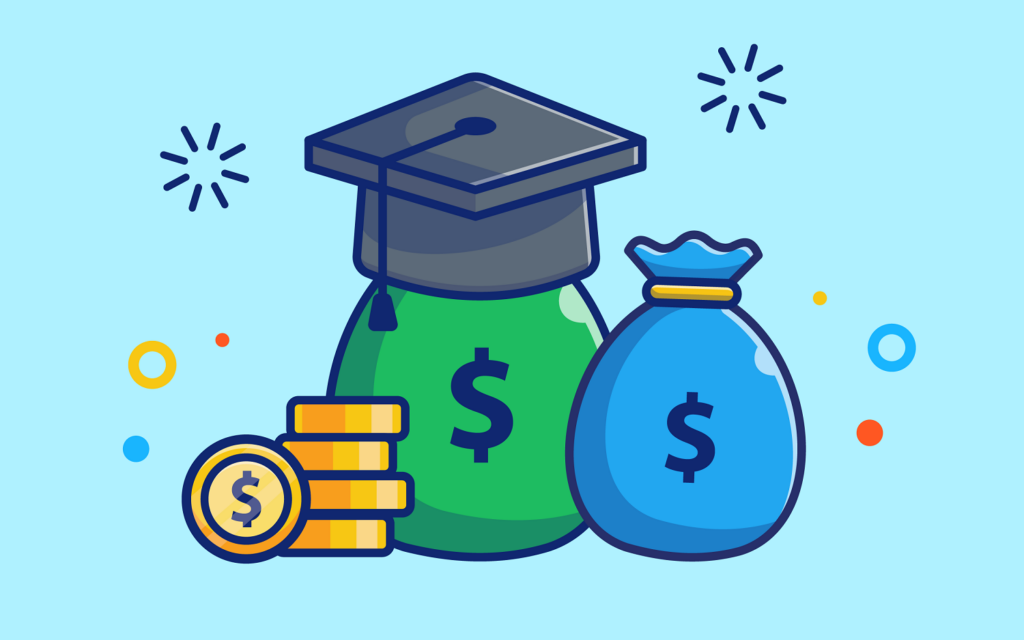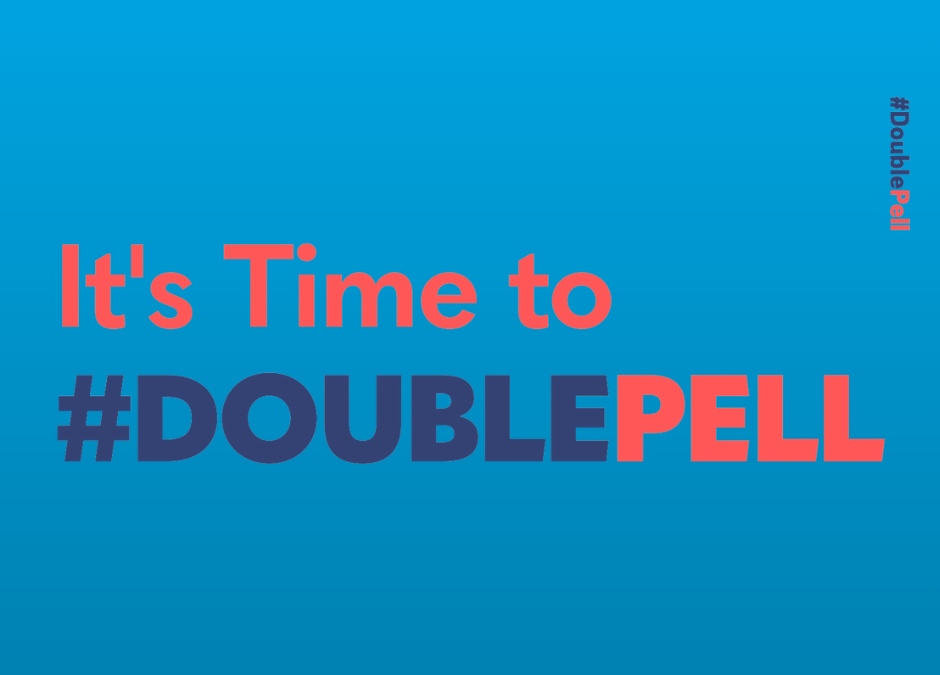
Paying For College, Submitting FAFSA |
It’s normal to have questions about Financial aid, especially if you have never applied for it before. One of the most common questions is, “Do I qualify for financial aid?” There are many myths and misconceptions about who is eligible to receive financial aid, so it’s important to have all the facts when going through this process.
Why This Matters
In this context, financial aid refers to money for college provided by the federal government in the form of federal student loans, grants, and work-study jobs. Other types of financial aid include scholarships from your college or outside sources, and private student loans from banks or other institutions. These types of funding have their own eligibility requirements, which may or may not be connected to your eligibility for federal student aid.
The only way to know exactly what type of financial aid you qualify for is to complete the Free Application for Federal Student Aid (FAFSA). When you (or your parent, if you are a dependent) complete the FAFSA, you will enter personal financial information that is used to calculate an Expected Family Contribution (EFC). Your school’s financial aid office will use this number, along with the cost of attendance at the college or university, to determine what types of aid and how much money you are eligible to receive.
Even if you or your parents think that you are not eligible for any federal financial aid, it is important to complete the FAFSA each year. Individual schools and states use this information to determine eligibility for scholarships, grants, and other types of non-federal student aid. Sometimes things change, and where you didn’t qualify for financial aid last year, you qualify this year. Thanks to the online application process, and the IRS Data Retrieval Tool, completing the FAFSA is simpler and faster than ever.

Do I Qualify for Financial Aid?
To determine if you meet basic eligibility requirements for financial aid, ask yourself the following questions. Please note, these questions apply to the student, not the person completing the FAFSA, such as a parent or guardian.
Am I a U.S. citizen, or an eligible noncitizen?
You are considered an eligible noncitizen if you meet any of the following criteria:
- U.S. national (including natives of American Samoa or Swains Island)
- U.S. permanent resident with a Permanent Resident Card
- An individual who has an Arrival-Departure Record (I-94) from U.S. Citizenship and Immigration Services showing one of the following designations:
- Refugee
- Asylum Granted
- Cuban-Haitian Entrant (Status Pending)
- Conditional Entrant (valid only if issued prior to April 1, 1980)
- Victim of human trafficking
- Parolee (must be paroled into the United States for at least one year and you must be able to provide evidence from the USCIS that you are in the United States for other than a temporary purpose and that you intend to become a U.S. citizen or permanent resident.)
- “Battered immigrant-qualified alien” who is a victim of abuse by your citizen or permanent resident spouse, or you are the child of a person designated as such under the Violence Against Women Act (VAWA).
- A citizen of the Federated States of Micronesia, the Republic of the Marshall Islands, or the Republic of Palau. If this is the case, you may be eligible for only certain types of federal student aid:
Do I demonstrate financial need?
In this case, “financial need” is defined as the difference between the cost of attendance at a school, and your Student Aid Index (SAI). Your SAI is calculated based on your FAFSA, and remains the same regardless of the cost of attendance at the school you choose.
The SAI is a measure of you or your family’s financial strength. It’s based on taxed and untaxed income, assets, and benefits such as unemployment or Social Security. Due to changes implemented as part of the FAFSA Simplification Act, the SAI will no longer include the number of students a family currently has in college as part of its calculations, as the EFC did.
Each individual school will calculate your aid eligibility by subtracting your SAI from the school’s cost of attendance (COA). This is why it’s important to send your completed FAFSA to all the schools you are considering attending, as your financial aid eligibility will vary from school to school.
Based on your demonstrated financial need, the school will create a financial aid package informing you of how much and what types of aid you can receive.
Am I enrolling in a degree or certificate program at an eligible school?
The institution and type of program in which you are enrolling also affects whether you qualify for financial aid.
In accordance with the Higher Education Act, which established federal financial aid programs, there are certain guidelines institutions must meet in order to receive financial aid benefits for students. Institutions must have accreditation from a nationally recognized accrediting agency, or approval from a recognized state approval agency, in the case of certain vocational schools. Schools must also be authorized by the state in which they are located, and receive approval from the U.S. Department of Education through a program participation agreement.
The individual program in which you are enrolling matters, too. Degree and certificate programs must be approved by the U.S. Department of Education, be longer than one year in length, and lead to gainful employment in order for students to receive financial aid to pay for those programs. During your college search process, you should confirm that the school and program you are interested in attending is eligible for financial aid.
Additional Qualifications for Financial Aid
In addition to the basic eligibility criteria, students must also meet the following qualifications:
- Have a valid Social Security Number (if you are a U.S. citizen) – Students from the Republic of the Marshall Islands, the Federated States of Micronesia, and the Republic of Palau are exempt from this requirement.
- Demonstrated eligibility to obtain a college or career school education – This means students must have a high school diploma, or a recognized equivalent, such as a General Educational Development (GED) certificate, or have completed high school in an approved homeschool setting. Students who were enrolled in college or career school prior to July 1, 2012, or are currently enrolled in an eligible career pathway program may show they’re qualified to obtain a higher education by passing an approved ability-to-benefit test (if you don’t have a diploma or GED, a college can administer a test to determine whether you can benefit from the education offered at that school) or completing six credit hours, 225 clock hours, or equivalent course work toward a degree or certificate.
- Sign the certification statement on the FAFSA – This confirms that you are not currently in default on any federal student loans, that you do not currently owe money on a federal student grant, and that you will use your federal student aid for educational purposes only.
- Maintain satisfactory academic progress – Once you are enrolled in college or career school, you must remain in good academic standing and meet your school’s standards for satisfactory academic progress to continue receiving financial aid.
- Submit a new FAFSA each year – Your financial aid eligibility, as determined by your FAFSA, is only valid for one academic year. Students or their parents must submit a new, updated FAFSA for each year that they want to receive financial aid. FAFSA deadlines vary by college and state, so it’s important to be aware of any FAFSA deadlines that apply to you.
Special Circumstances
Students in the following special circumstances may or may not qualify for financial aid, or may need to meet additional eligibility requirements:
Additional Resources
Resources provided by:


After You Submit Your Application, Our Voices, Paying For College |
For low-income students, choosing the right college or university is often decided by how much money they will give us. We do not have the luxury of choosing a university in a favorable location or by enrollment size. Some of us can’t even choose the one that offers the best program for our major because it doesn’t grant us enough funding. We, low-income students, are faced with limitations when it comes to going to college.
And yes, scholarships are available, and their abundance does inspire us to apply to as many as possible. However, their competitive nature means not all students will receive a scholarship and therefore we cannot rely just on them. In other words, we need our government to keep funding education access for low-income students. Opportunities that come with programs like the Pell Grant.
What is the Pell Grant exactly?
The Pell Grant is a need-based grant awarded to undergraduate students who have not obtained a degree and demonstrate exceptional financial need. It has provided support for about 7 million students each year across 5,000 institutions in the U.S. However, its purchasing power has declined significantly over time. According to the Institute for College Access and Success, the Pell Grant only covers 30% of a college education when it covered about 80% in 1980.
As a Oaxacan low-income student raised in South Central LA and a personal recipient of the Pell Grant, I can vouch that receiving this aid was a significant help for covering my tuition at UC Berkeley during my first two years of college. I felt supported by this assistance and received an additional refund to cover my basic needs like food and housing. However, after my sophomore year, I noticed that my Pell Grant amount was declining as I reached senior year.
This is why we need to build awareness to #DoublePell because it can close the affordability gap for low-income students, leading to higher enrollment and an increase in retention rates. Education Policy Advisor Shelbe Klebs argues that the COVID-19 pandemic has made many students “rethink their post-secondary plans for fall; some may forgo college temporarily or permanently to work to support their families while others may choose to attend a more affordable community college close to home instead of a pricier four-year school farther away.”
Doubling the Pell Grant is the most effective way to make college affordable and available for all students. It can lead to more enrollment of low-income students of color, increase graduate school enrollments with more students pursuing higher education, decrease dropout rates, and restore its purchasing power.
Having this grant available made my college selection process easier because I could choose a good school with the financial aid package that was right for me. I am #ThankfulForPell because I was able to graduate from a 4-year university. By doubling the Pell Grant, I believe more students like me can have greater access to higher education, reach their potential and empower their communities.

Basic Needs Support, Paying For College |
According to Feeding America, food insecurity is “a federal measure of a household’s ability to provide enough food for every person in the household to have an active, healthy life.” Food insecurity is such a big issue for students because it can affect your test scores, concentration, energy, academic standing, and lowers your chances of graduating. In addition, food insecurity affects the most vulnerable students ex. students who receive financial aid, students who are parents/ caretakers, students with disabilities, LGBTQ+ students, first-generation students, BIPOC, and more.
Unfortunately, students who are facing food insecurity are not accessing all the public benefits they could. The food insecurity among college students can get worse because families are losing income, medical bills are piling up, and folks are being forced to tap-in to their savings. However there are college, local, state and federal resources for you as a student.
Below is a list of food banks/ pantries that are accessible to you and your family at no cost, because no student should go upon not knowing when their next meal will be.

Paying For College, Student Loans |
Paying for college can seem intimidating, but after calculating your net price, you’ll get a better sense of your education’s affordability. Though you may receive grants, scholarships, and other money you do not have to pay back, you may have to take out loans to pay for school.
What exactly is a loan?
Simply put, a loan is money that is borrowed. Unlike your grants and other aid, you will eventually have to repay your loan. That said, there are varying types of loans that have different terms and conditions. This article will cover the most common types of college loans.
Federal subsidized loan
After reviewing your FAFSA application, your school may offer you a subsidized loan if they deem you high-need. The amount they offer you will depend on the rest of your financial aid package. They will never offer you a subsidized loan that exceeds the cost of your school’s attendance.
With a subsidized loan, you are not required to pay interest while you are a student (half time or more). After you graduate, you have six months until you are required to begin paying. This loan is offered by the federal government.
Federal Unsubsidized loan
Regardless of your financial need, your school will offer you an unsubsidized loan. The amount they will offer you will depend on the rest of your financial aid package.
With an unsubsidized loan, you are required to begin paying interest as soon as you take out the loan. If you do not want to pay the interest immediately, you may defer your payments (postpone them). Deferring your payments, however, will add the interest due to your capital (the original amount of money you borrowed). Read more on interest and capital below.
Federal vs Private loans
Despite the complexity of federal loans, they are both better options than a private loan from a bank or other financial institution. Federal loans have lower interest rates than banks, meaning that in the long run, you will pay less back. Some of the federal loans perks include:
- Terms and conditions set by law. Conversely, private lenders can change their terms and conditions whenever they want.
- Fixed interest rates. This means you won’t be subjected to a higher interest rate because of the market or your credit score. Private lenders can change their interest rates as they see fit. With lower interest rates, you pay less in the long run!
- Loan forgiveness programs. Your federal debt may be forgiven if you work in certain public service sectors.
CA Dream Loan Program
If you are an undocumented student in California, you are not eligible for federal student loans. However, California has the CA Dream Loan Program available to undergraduate and graduate students attending the CSU and UC.
Your school’s financial aid office will offer you the loan based on your Dream Act application. The maximum loan is $4,000 a year. You are not required to pay interest while you are in school and have six months to start paying your loan off. The terms and agreements are almost identical to the federal subsidized loan.
Read more about the difference between government (state and federal) and private loans here. We at Let’s Go to College CA, highly encourage you to use government loans over private loans; we believe the terms and conditions are better than private loans.
Principal and Interest Rate
What is a principal?
In finance, the principal is the amount of money that you owe. If you take out a $1,000 loan, your principal is simply $1,000.
What is interest?
Interest is the cost of borrowing money. A financial institution will charge you a percentage of the capital, that you have to pay back on their terms. You can pay the interest monthly, yearly, or however often required.
People often think that when you pay interest, you are paying off your loan. This is incorrect. You are simply paying the financial institution for the privilege of having the capital.
Let’s say you take out a $1,000 loan. The interest rate (the percentage of the capital) is 10%. This means that monthly, you are paying the financial institution $100. Even though you are paying $100 every month, your capital, the $1000 you originally borrowed, is still $1000. Again, this is because you have only been paying interest.
The only way to decrease the capital is to pay extra money in addition to the interest. If your capital is $1000 and your interest rate is 10%, then you may want to pay $150. That way, $100 goes towards interest and $50 towards your capital. Then, your capital is $950. This means that your interest payment is now $95. Remember, interest is simply a percentage of the capital you owe.
Please note that with unsubsidized loans, your deferred interest becomes part of your capital. Let’s say you took out a $1000 loan. You differ your 10% interest rates for a whole year (12 months), meaning you did not pay $1200 worth of interest. This amount gets added to your capital, so instead of owing $1000, you now owe $2200. This is how student debt accumulates significantly!
Check out these Youtube videos for more explanation on capital and interest rates.
Check out this US News Report article on college financial literacy. It includes links and brief explanations on budgeting, living on your own, filing taxes, and more.
Vocabulary Summary
Here is a quick rundown of the terms mentioned above!
Federal Subsidized – a loan that does not charge interest until six months after you have graduate college given by the federal government.
Federal Unsubsidized – a loan that charges interest as soon as you take the loan out given by the federal government.
Private loan – a loan that charges interest as soon as you take it out, given by a private lender like a bank, credit union, or other financial institution.
Capital – the amount of money that you owe.
Interest – a percentage of the capital that you are charged for the privilege of the loan
Please know that Let’s Go to College CA is student-led and student-centered. We understand the burden of student debt and will constantly advocate for better affordability.












